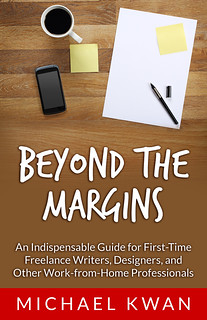But a few years ago, one company did something slightly different. It sent me two copies of the same book. Now, unless I’m mistaken, there’s no reason for me to read the second copy, once I’ve read the first. But these publishers had a different goal in mind. They sent a note explaining why they thought the book would be good for my students, but they also mentioned that they sent a second copy so that I could pass it along to a colleague who might be interested.
I fully realize that, given what’s been going on, talking about something that’s “contagious” and “going viral” has a whole different meaning. And, granted, that interpretation really is the original, literal meaning. It has to do with actual germs and viruses and getting sick. But before all of this went down, a lot of us would talk about how a TikTok challenge or YouTube video has “gone viral” on the Internet. It’s in that spirit that I’d like to highlight Jonah Berger today.
A Bit of Free Advertising
The marketing professor at the Wharton School of Business explores why some things become the talk of the town (and the world) in Contagious: Why Things Catch On. The New York Times best selling book starts out with this little anecdote about how publishers and publicists typically reach out to media. When a new book is published, they’ll send copies out to all sorts of people, hoping to get some media coverage. That media coverage, in turn, hopefully translates to increased sales.
Usually, these publicists and marketing professionals will curate a list of contacts. That’s what I did myself with Beyond the Margins and Beyond the Baby Babble. You send a copy of the book to these people and you hope they help generate some buzz for you. Maybe you land an interview on a podcast, TV show, radio program, or online magazine. As Jonah Berger points out above, this particular publisher took a slightly different approach.
By sending two copies of the book to each recipient, they encouraged each recipient to pass along the second copy to someone who they thought might want to read in the book.
That’s how word of mouth helps with targeting. Rather than sending books to everyone, the publishers got me, and others, to do the targeting for them. Just like a searchlight, each recipient of the double mailing would look through his or her personal social network, find the person that the book would be most relevant for, and pass it along.
In other words, they got the recipients to do a bit of marketing for them.
Word of Mouth, Word of Mouse
Years ago, I wrote about the power of word-of-mouse marketing. Online word of mouth, particularly referrals and recommendations, can go much further than if you did the outreach yourself. If I reached out to someone I didn’t know out of the blue, they might ignore me altogether. By comparison, if a close friend or work colleague recommended me to them, they’d be much more willing to listen.
For example, if a newly opened restaurant exclaimed they were the best, you probably don’t weigh that opinion too heavily. Clearly, the restaurant is in it to drum up more business. But, if I were to recommend this restaurant to you personally, and you value my opinion, then you’d be much more likely to give them a try. Personal recommendations are far more powerful than any advertisement could ever be.
Jonah Berger’s 6 STEPPS for Going Viral
If there’s one guy who knows a thing or two about having a viral hit, it’s “Weird Al” Yankovic. Can you believe he’s been actively busting out his songs and satire for over 40 years?! While you don’t need to hit all six of these components, they all help in making something that people will want to pass on to their friends. Jonah Berger breaks it down with the acronym STEPPS:
- Social currency: Does sharing this make the sharer look good/smart/well-connected?
- Triggers: Will people be reminded of the product/content by things in their environment at the right time and place?
- Emotion: Does the product/content elicit an emotional response? When we care, we share.
- Public: Is the thing clearly visible by those around you? It needs to be seen to be replicated.
- Practical value: Does it seem like useful information? Something people should know?
- Stories: Is the idea wrapped up in a broader narrative? People connect with stories, not stats.
I certainly don’t claim to be any sort of marketing guru, so this book was certainly insightful. Have you had any success with having something go viral? What was that like and do you think you could capture lightning in a bottle again?





Recent Comments